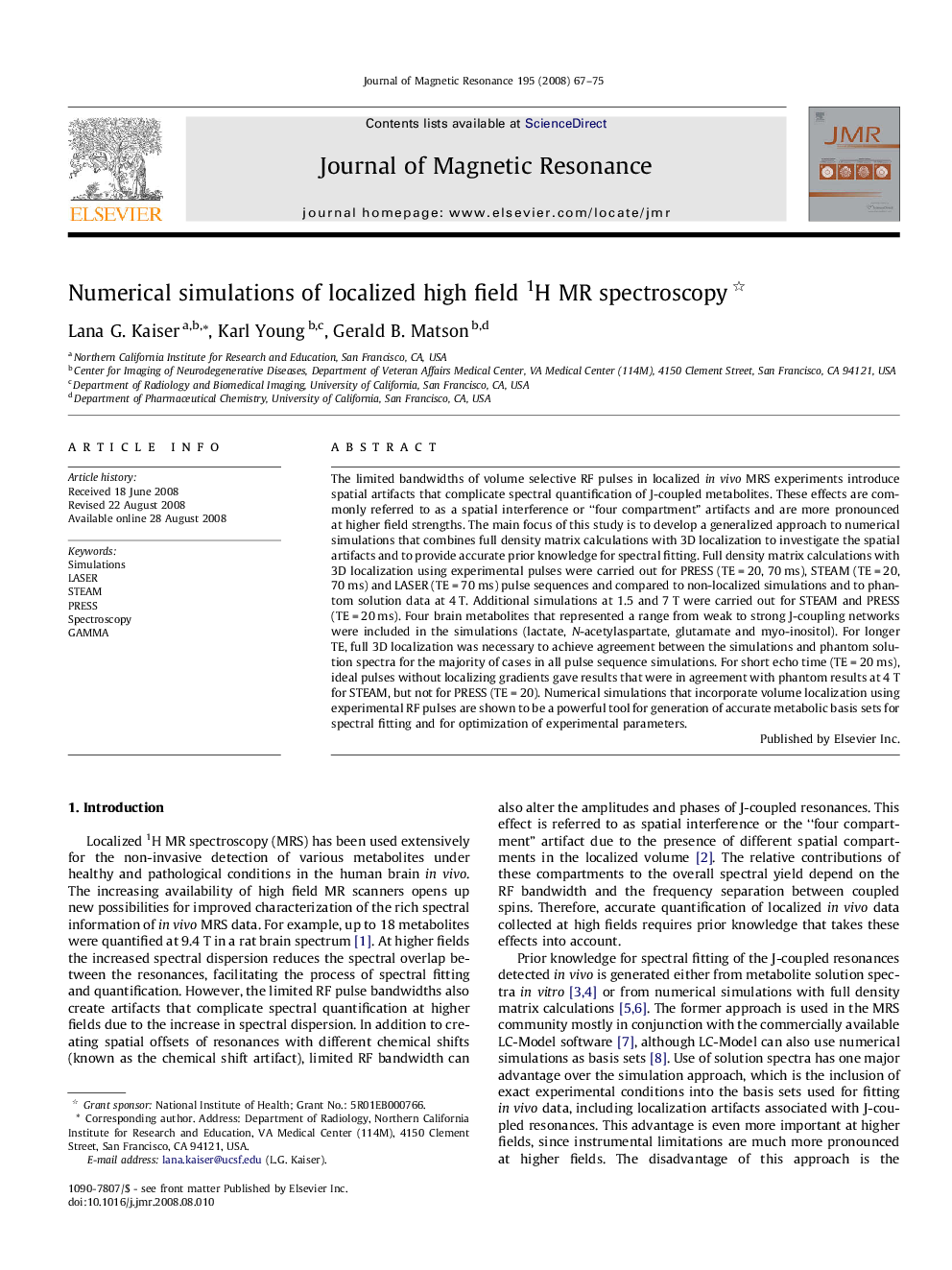| Article ID | Journal | Published Year | Pages | File Type |
|---|---|---|---|---|
| 5407091 | Journal of Magnetic Resonance | 2008 | 9 Pages |
Abstract
The limited bandwidths of volume selective RF pulses in localized in vivo MRS experiments introduce spatial artifacts that complicate spectral quantification of J-coupled metabolites. These effects are commonly referred to as a spatial interference or “four compartment” artifacts and are more pronounced at higher field strengths. The main focus of this study is to develop a generalized approach to numerical simulations that combines full density matrix calculations with 3D localization to investigate the spatial artifacts and to provide accurate prior knowledge for spectral fitting. Full density matrix calculations with 3D localization using experimental pulses were carried out for PRESS (TEÂ =Â 20, 70Â ms), STEAM (TEÂ =Â 20, 70Â ms) and LASER (TEÂ =Â 70Â ms) pulse sequences and compared to non-localized simulations and to phantom solution data at 4Â T. Additional simulations at 1.5 and 7Â T were carried out for STEAM and PRESS (TEÂ =Â 20Â ms). Four brain metabolites that represented a range from weak to strong J-coupling networks were included in the simulations (lactate, N-acetylaspartate, glutamate and myo-inositol). For longer TE, full 3D localization was necessary to achieve agreement between the simulations and phantom solution spectra for the majority of cases in all pulse sequence simulations. For short echo time (TEÂ =Â 20Â ms), ideal pulses without localizing gradients gave results that were in agreement with phantom results at 4Â T for STEAM, but not for PRESS (TEÂ =Â 20). Numerical simulations that incorporate volume localization using experimental RF pulses are shown to be a powerful tool for generation of accurate metabolic basis sets for spectral fitting and for optimization of experimental parameters.
Related Topics
Physical Sciences and Engineering
Chemistry
Physical and Theoretical Chemistry
Authors
Lana G. Kaiser, Karl Young, Gerald B. Matson,
